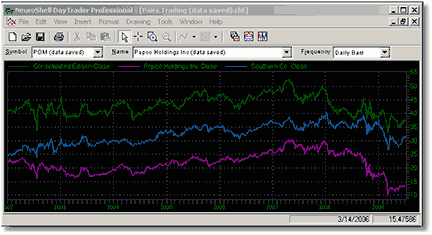NEURAL NETWORKS
Another Way To Pair Trade
Neural Network Pair Trading
Pair trading is a market-neutral trading strategy. But how do you find the right pair? Using neural networks, of course.
Are you taking a second look at market-neutral trading systems in today’s difficult markets? Pair trading is popular, but finding the right pair is more challenging. Neural networks offer an alternative to traditional pair-matching methods.
The usual pair-trading strategies speculate on future convergence of a price spread between similar securities. Once a pair is identified, the customary rule is to buy one security and sell the other short in an attempt to create a market-neutral trading system. The trades are initiated when the two normalized securities prices diverge a specified amount, often by two standard deviations. The trades are exited when the prices once again converge.
Instead of crossing normalized prices, neural nets use one stock to predict another. Trading signals are generated based on the spread between the actual and predicted values. The optimized neural net can even select the security used to make the prediction from a basket of securities; the neural net can be a matchmaker of sorts.
Once the neural net has found the pair, another artificial intelligence technique — a genetic algorithm optimizer — can customize buy/sell decisions for a particular pair rather than using static rules such as buy when the pair diverges by two standard deviations. In Figure 1, you see three energy stocks that could be candidates for a pair-trading system.

Figure 1: pair trading candidates. Three energy stocks that follow one another but don’t cross prices may still be candidates for a pair trading system using a neural network to pick the pair.
Building alternative pair models
We’re going to build our pair-trading system in two steps:
- Build a neural network prediction for the price of one stock based on another stock in the same sector.
- Use the spread between the actual and predicted values of the stock to generate simultaneous buy/sell hedging signals for the stock used as the basis for the prediction and the predicted stock.
Neural network prediction
We decided to model several stocks in the utility sector, which are described in a paper by trader/analyst Binh Do as homogenous due to their stable demand and product similarity.